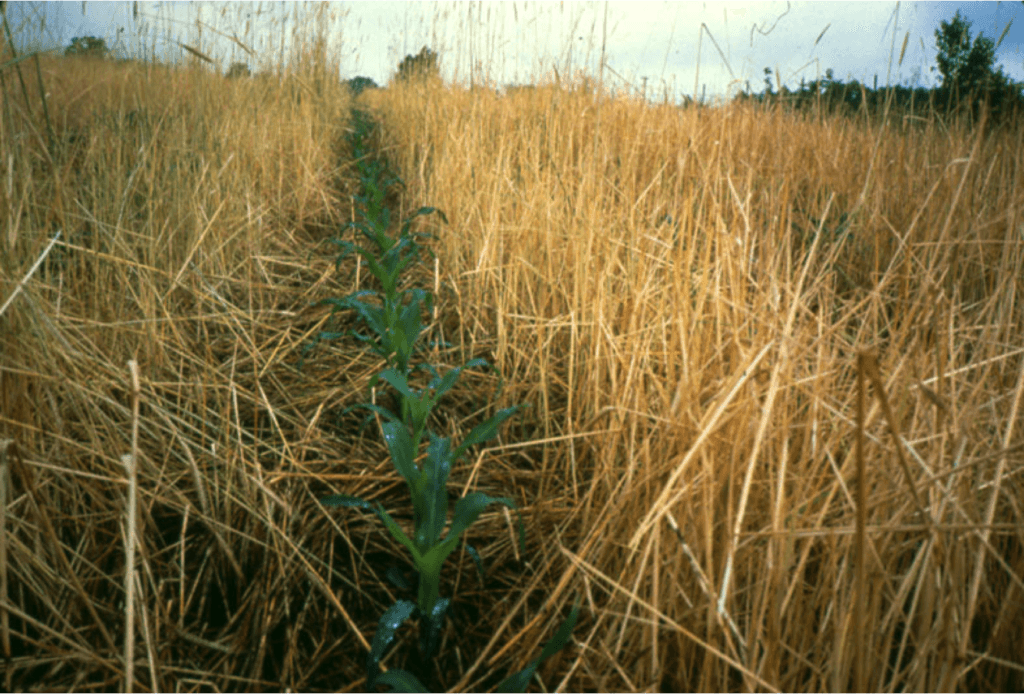Shandong Tranlin, a Chinese company, wants to buy crop residues to make paper products.
Farmers may be selling the most important ingredient for soil health to Shandong Tranlin.

Healthy soil has organic matter above three percent. Crop residues returned to the soil help achieve this.
Shandong Tranlin, a multi-national, Chinese company, operates as Vastly in the US. They are building a $2 billion paper making plant in Chesterfield County, Virginia that will make paper products from agricultural “waste products”. It will be the largest Chinese “greenfield” investment in the United States.
Shandong Tranlin makes paper products such as plates, cups, and bowls that are not bleached. They are more biodegradable than traditional paper products made from the pulp of trees. The process to make their products, they claim, is less hazardous to the environment than the process used to make paper from trees.
To make their paper products they plan to buy agricultural “waste products” from Virginia to Kansas.
Crop Residue is NOT a Waste Product
These so-called “waste products” are not waste products at all. They are the stalks and straw that remains after harvesting grain such as corn, wheat, rye, and soybeans. In agriculture, we call them “crop residues”. The USDA’s Natural Resources Conservation Service has a national standard for using crop residues to build soil health. This Best Management Practice is called “Crop Residue Management”.
Crop Residue is More Valuable in the Soil than in a Paper Plate
Crop residues are rich in carbon, which is needed to improve soil health. Removing this carbon-rich residue robs the soil of its health and leaves the land bare and vulnerable to the effects of weather. I believe crop residues are more valuable in and on the land than in a paper plate.
Read my OPED piece , “Waste Not: Selling Carbon-Rich Residue Will Short Change Soil”. It was distributed by the Bay Journal News Service on 1/25/2017.

Corn planted into the crop residue of rye builds soil health, reduces soil erosion and retains soil moisture.
Carbon-rich crop residues help make soil organic matter. This organic matter is important for releasing nutrients for plants to grow and retaining soil moisture. It’s the “glue” that holds soil particles together.

Baling up soybean stalks leaves land vulnerable to the affects of weather. The average annual soil loss on this field is greater than 20 tons per acre per year.
Crop Residue Helps Reduce Soil Erosion
Raindrops falling on bare soil have the energy to dislodge soil particles. Crop residue left on the land disappates this energy. Once soil particles are dislodged they begin their gravitational journey to the nearest ditch or stream. These soil particles carry with them anything attached to them such as fertilizer and pesticides; therefore, polluting our streams.
170,000 Pounds of Nitrogen Dumped annually into the James River
Their paper making processes will result in lots of wastewater being discharged into the James River. Their annual discharge, according to Virginia Department of Environmental Quality (DEQ) records will have an estimated 170,000 pounds of nitrogen in it (Bay Journal 1/22/2017).
This new discharge comes at a time when all the wastewater discharge facilities in the James River watershed are expected to reduce nitrogen discharges by 15 percent to meet pollution reduction goals established in Virginia’s Watershed Improvement Plan.
Shandong Tranlin Must Get a Wastewater Discharge Permit
Their wastewater discharge requires a permit from DEQ. In order to obtain this permit, Shandong Tranlin must buy nutrient credits on the open market. The Bay Journal‘s Whitney Pipkin wrote an excellent article about it. The James River is already at its limit for pollution discharges and Shandong Tranlin wants to add pollution. How will this work when we are legally on a path to reduce pollution discharges?
Environmental Trade-Offs?
So, maybe the Chinese paper product making process is less environmentally damaging than using trees but, before we sell our soil health to make brown paper plates we must weigh the cost of less carbon in the soil and more pollution in the James River and the Chesapeake Bay.

Raindrops have explosive energy that can easily dislodge exposed soil. Soil must be covered with crop residue to protect it from these erosive forces.





22 Comments
Leave your reply.